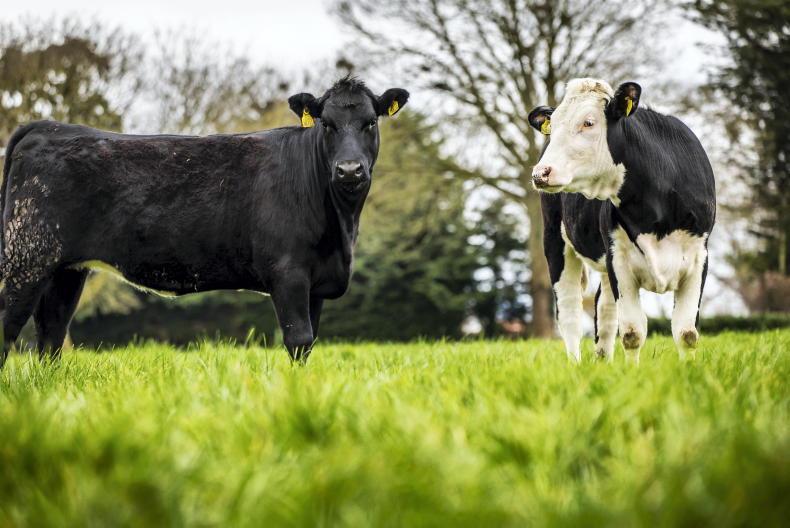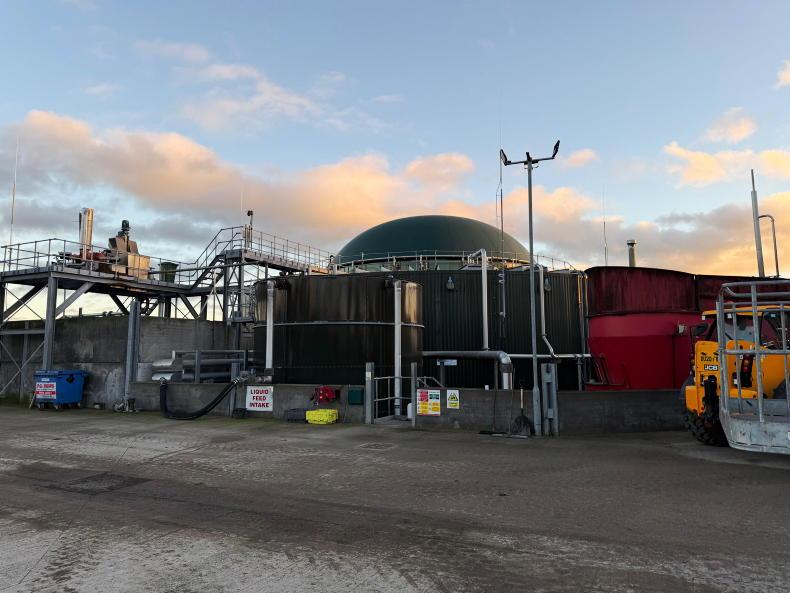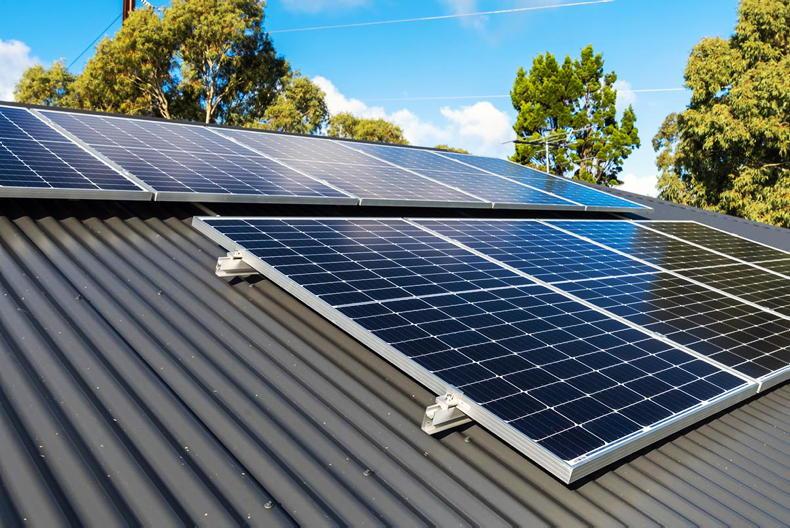While measuring the physical performance of animals is important and gives farmers a good indication that production targets are being constantly met, these systems need to stack up financially if they are to have a sustainable future on Irish farms.
Diet proportions
Figures 1 and 2 show the makeup of each proportion of the diet on a dry matter (DM) basis for heifers and steers. This shows that grazed grass is making up two-thirds of the heifers’ lifetime diet on farm while the bullocks are just slightly behind this at 62%.
Grass silage makes up the next greatest proportion at just under a quarter of the diet, while concentrate makes up just 11% of the heifer diets and 14% of the steer diets.
This means forage makes up almost 90% of the animal’s lifetime diet. Remember, this is on a DM basis. If we were to look at a freshweight figure (concentrates are 85% DM versus silage at 28% DM and grazed grass around 18% DM), concentrate would account for less than 4% of the total diet.
Interestingly, when we look at the cost of each of these inputs, although concentrate makes up such a small proportion of the diet, it accounts for a significant proportion of the overall feed costs associated with the production system at 27% for heifers and up to one-third for the steers.
This shows the importance of maximising the contribution of grazed grass in the overall diet – early turnout, a long grazing season and highly digestible leafy swards that drive on performance. For the months of the year where grazed grass is not an option, high-quality silage needs to be at the ready to make up as much of the remainder of the diet as possible. The 2019-born cattle in question spent the first winter on silage with a dry matter digestibility (DMD) figure of 72%, while for those that were rehoused for a short finishing period last autumn, the silage quality was even higher at 76% DMD.
This allowed us to keep concentrate to an absolute minimum. The average lifetime concentrate input for heifers was 485kg and 725kg for the steers. Where grassland management is poor or silage quality is not excellent, then a much higher level of concentrate input would be required to maintain this level of performance.
Financial performance
It is unfortunate that excellent production performance of these animals was not backed up with the required financial performance they deserved. At an average beef base price received of €3.70/kg, no beef system can expect a viable return. The average gross margin was €291/head for heifers and €316/head for steers.
Depending on your farm’s overheads and the value you place on land rental and labour costs, there is in the region of €280/head to €320/head fixed costs to be placed on top of this, meaning the system struggles to return a positive net margin.
We must be mindful of the fact that animals of known high genetic merit continually hit targets throughout the system and achieved carcase weights well above what would be typical for dairy-beef animals slaughtered at a similar age, and yet they struggled to leave a positive return.
System performance
To be able to achieve an adequate carcase weight at the end of the second grazing period, all aspects of the system need to be carefully managed. From calf rearing, to animal health and grassland management, if one of these aspects is not optimised, the system falls down.
Top-class grassland management is a must for all dairy-calf-to-beef systems. The farm also needs to be growing a lot of grass. In 2020, for example, the demonstration farm grew over 13tDM/ha – almost double the estimated grass growth on the average drystock farm in Ireland.
Calf price and rearing
While the programme operates completely with AI-sired calves purchased off farm, there is a strong emphasis placed on calf price.
There is no point paying over the odds for these types of animals just to make up the numbers. As can be seen from the budgets, it operates on tight margins and calf price has a big effect on the overall profitability of the system.
After purchase, it cost €131/calf to take them through the 10-week average rearing phase to being weaned off milk out at grass.
Early v late maturing
Comparing breed maturity is interesting as it differs between heifers and bullocks. For the bullocks, the late-maturing breed types of Limousin and Belgian Blue come out with a slightly better gross margin compared to the early-maturing Angus and Hereford breeds. This is due partly to the increased carcase weight of 22kg as well as a better conformation score meaning that they fare better on the beef price grid.
It is worth noting that a greater proportion of late-maturing steers were finished out of the shed just before Christmas while more of the early maturing types had been killed either off grass in October or after a short housing period into November. What also comes into play is that there was a beef price rise over this period from late October to the runup to Christmas. Therefore, the bullocks killed out of the shed had an 8c/kg higher base price on average.
For the heifers, the opposite result was found with early maturing heifers having a greater gross margin compared to the late-maturing breeds. The late-maturing heifers managed a 29kg heavier carcase on average, as well as a similar increase of 8c/kg on base price as the bullocks due to the later slaughter date (which increased to a 16c/kg differential once on the grid due to better conformation scores). However, this wasn’t enough to offset the two biggest cost differences between the two groups – calf price and meal input. There was €107 difference in calf price between the breed maturities and an additional €48 on meal input.
Concentrate input
The level of concentrate input in these systems ranged from around 350kg lifetime for the first heifers killed off grass to almost 1,000kg for the final bullocks out of the shed. This has a huge effect on the overall profitability of the system. Again, it must be stressed that the figures on the demonstration farm amount of meal required in each system have been achieved with a good level of grassland management as well as top-quality grass silage going in over the winter months. Where either of these aspects are not up to scratch, the meal input into the system can skyrocket quite quickly, completely changing the economics.
Carcase weight
We have included carcase weight in the sensitivity analysis because it highlights the importance of constantly hitting daily liveweight targets throughout the system. Even the shortest period of underperformance in a dairy-calf-to-beef system will have a massive effect on the carcase weight achieved. On the other hand, it also shows the potential for improvement. The 2020 heifers achieved a 13kg heavier carcase compared to the 2019-batch slaughtered at a similar age.
Land and labour
Our analysis includes a cost on land and labour which all farmers might not cost into the system. These figures can be tweaked as you see fit to suit your own farm setup.










SHARING OPTIONS